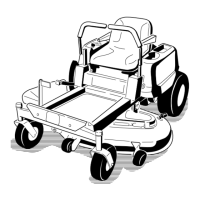Why won't my Toro TimeCutter Z5020 Lawn Mower engine start?
- JJesse FlemingAug 3, 2025
Your Toro Lawn Mower engine might not start due to several reasons. The fuel tank could be empty, so you should fill it. The choke might not be on; move the choke lever to the 'On' position. A dirty air cleaner can also cause this, so clean or replace the air cleaner element. Check if the spark plug wire(s) is loose or disconnected and install it on the spark plug. The spark plug(s) could be pitted, fouled, or have an incorrect gap, so install a new, correctly gapped spark plug(s). There could be dirt in the fuel filter, so replace the fuel filter. Also, ensure you're using the correct fuel type; if not, drain the tank and replace it with the proper fuel. Finally, check the oil level in the crankcase and add oil if it's low.










